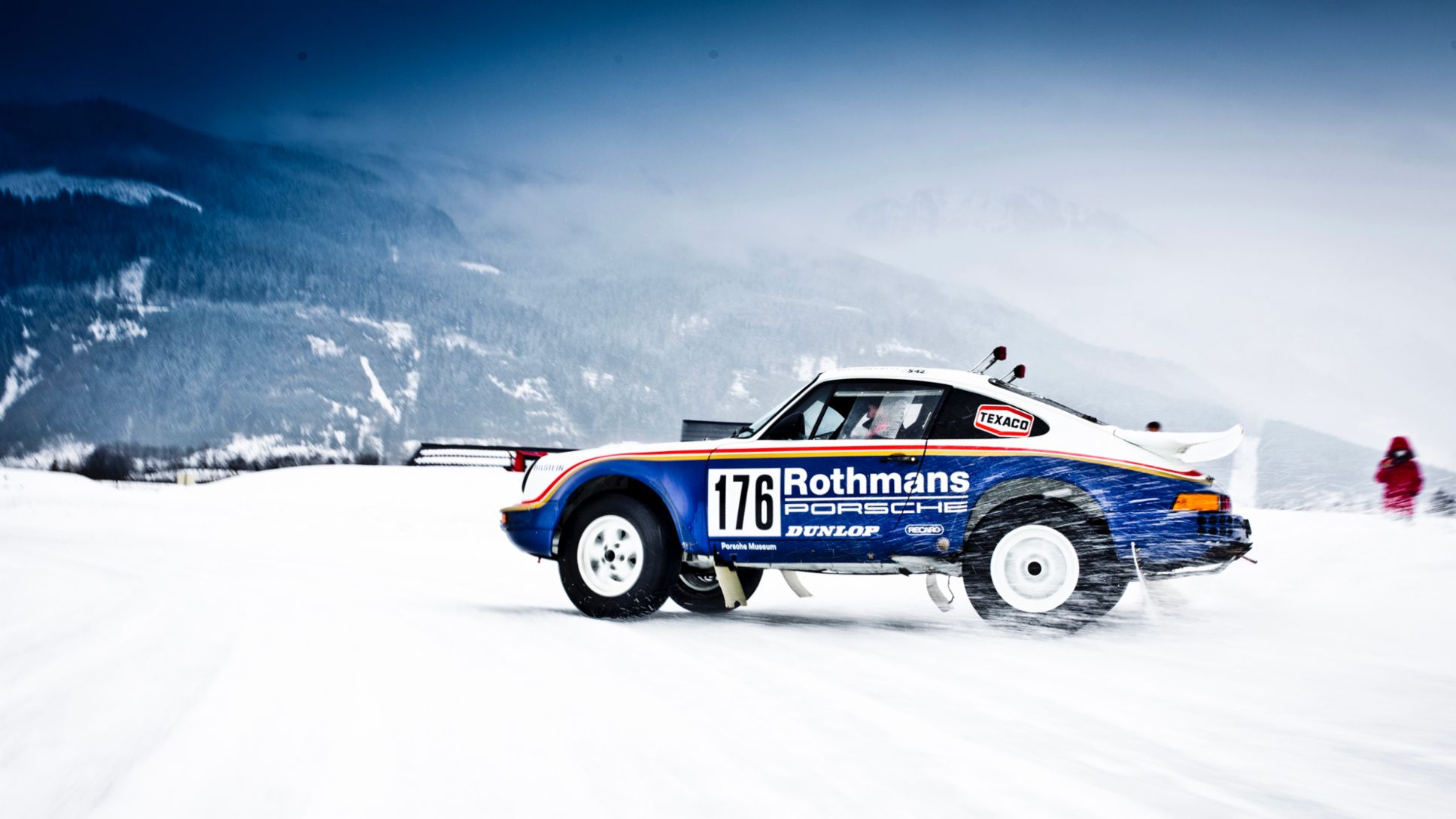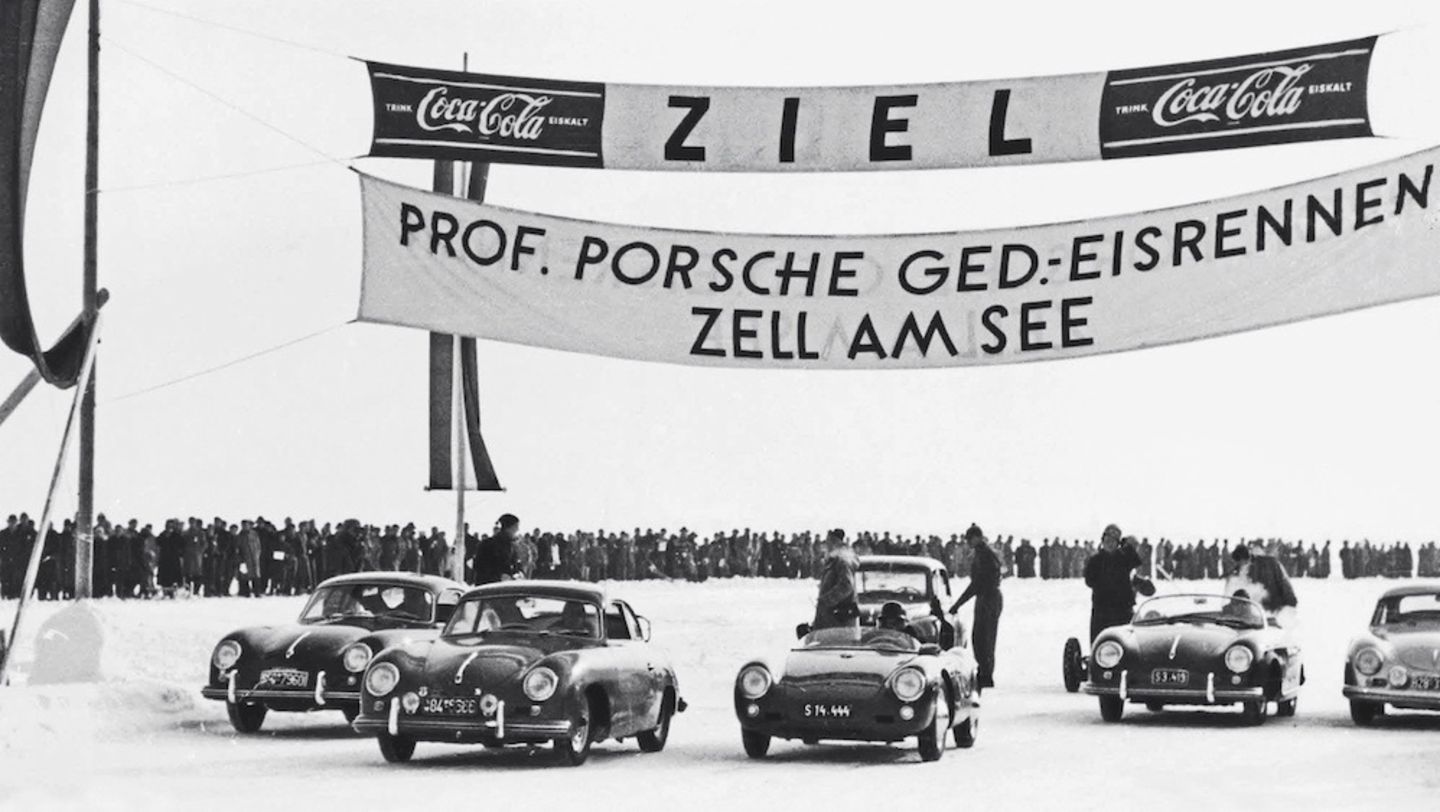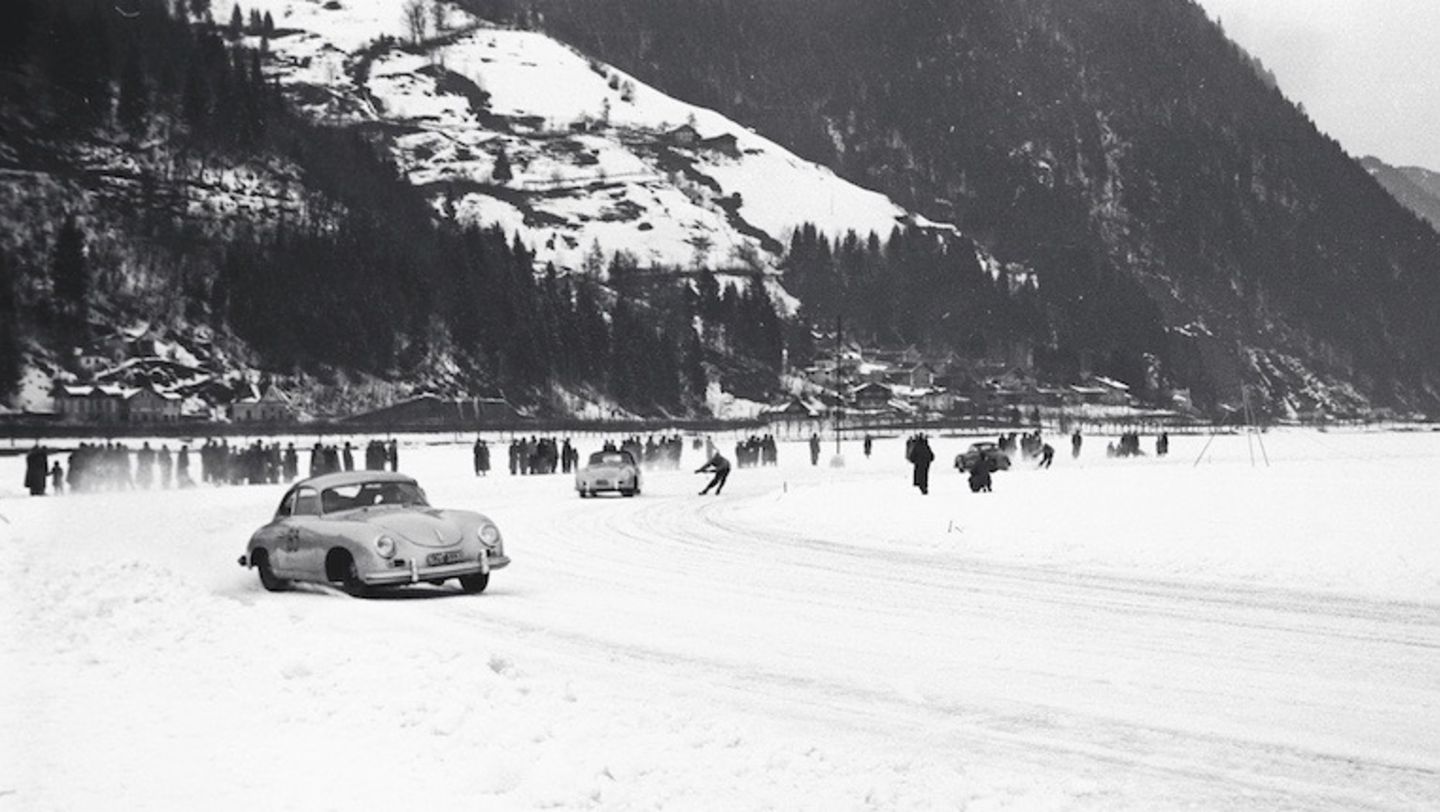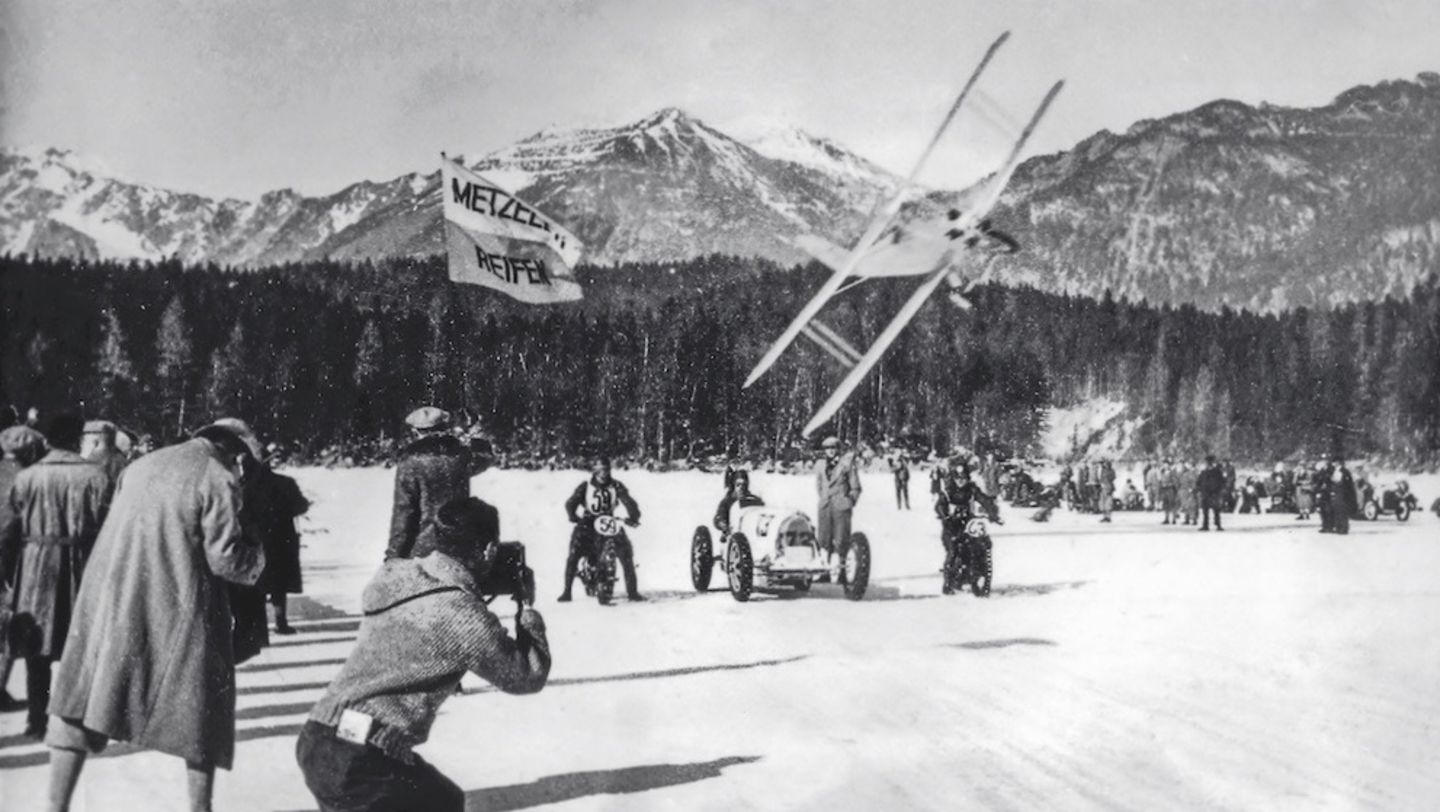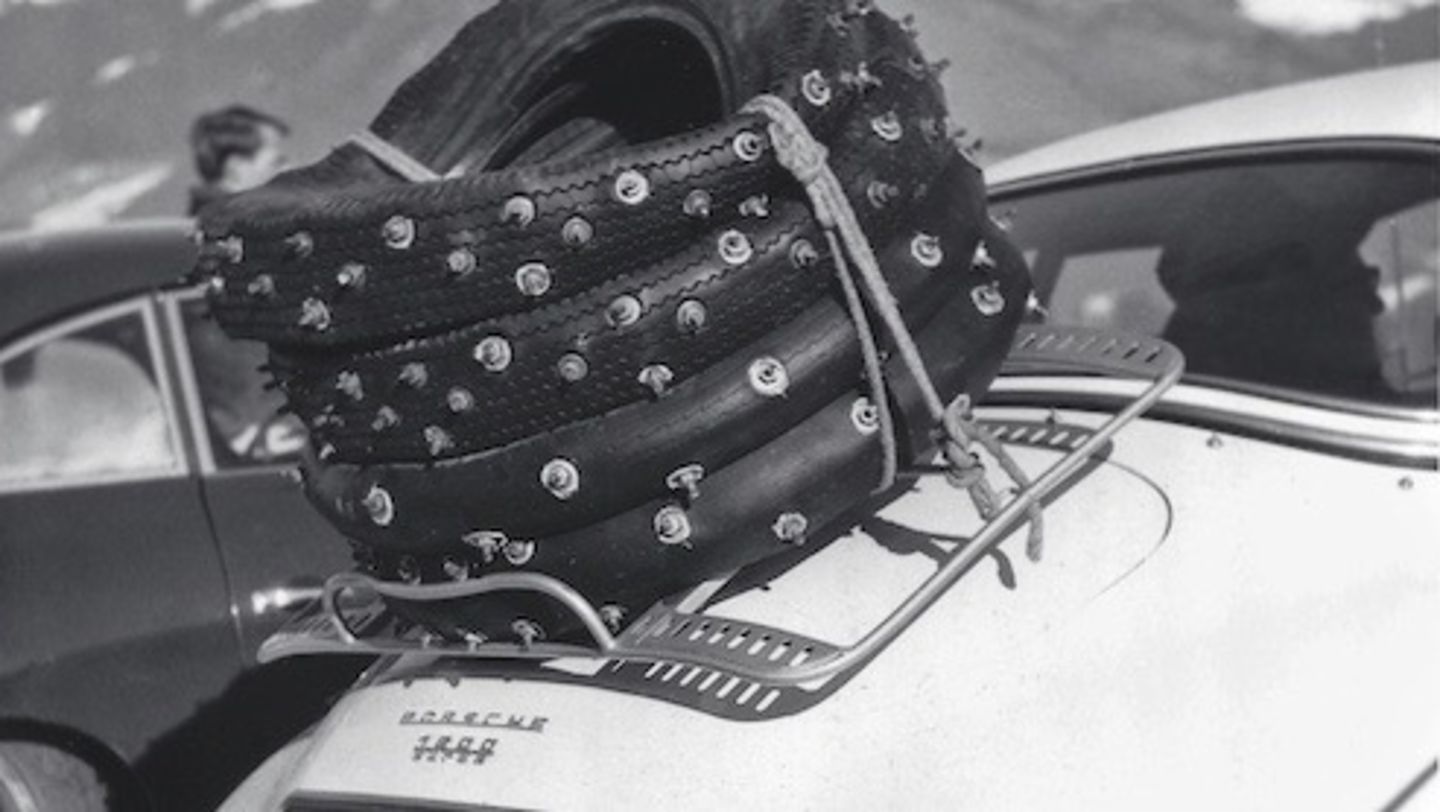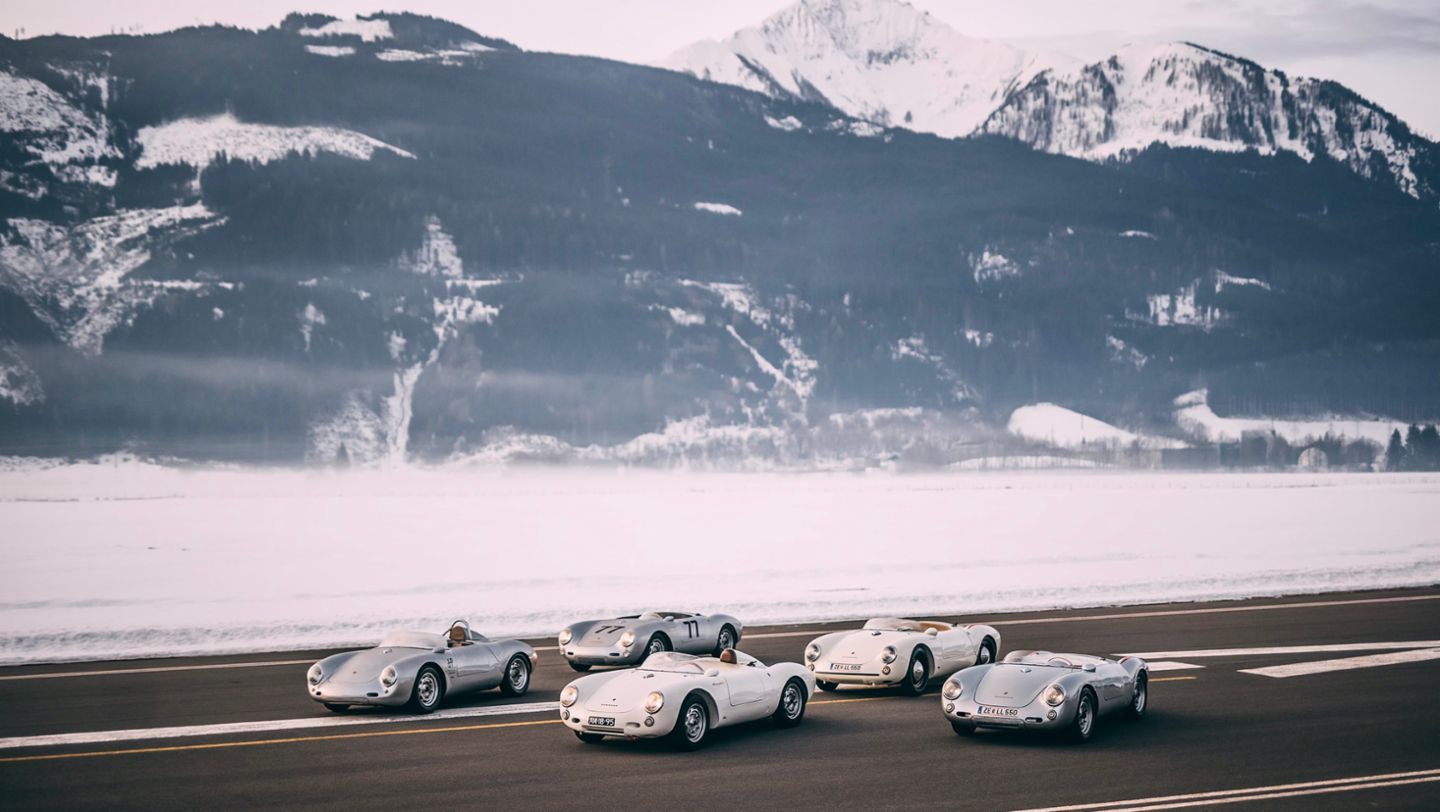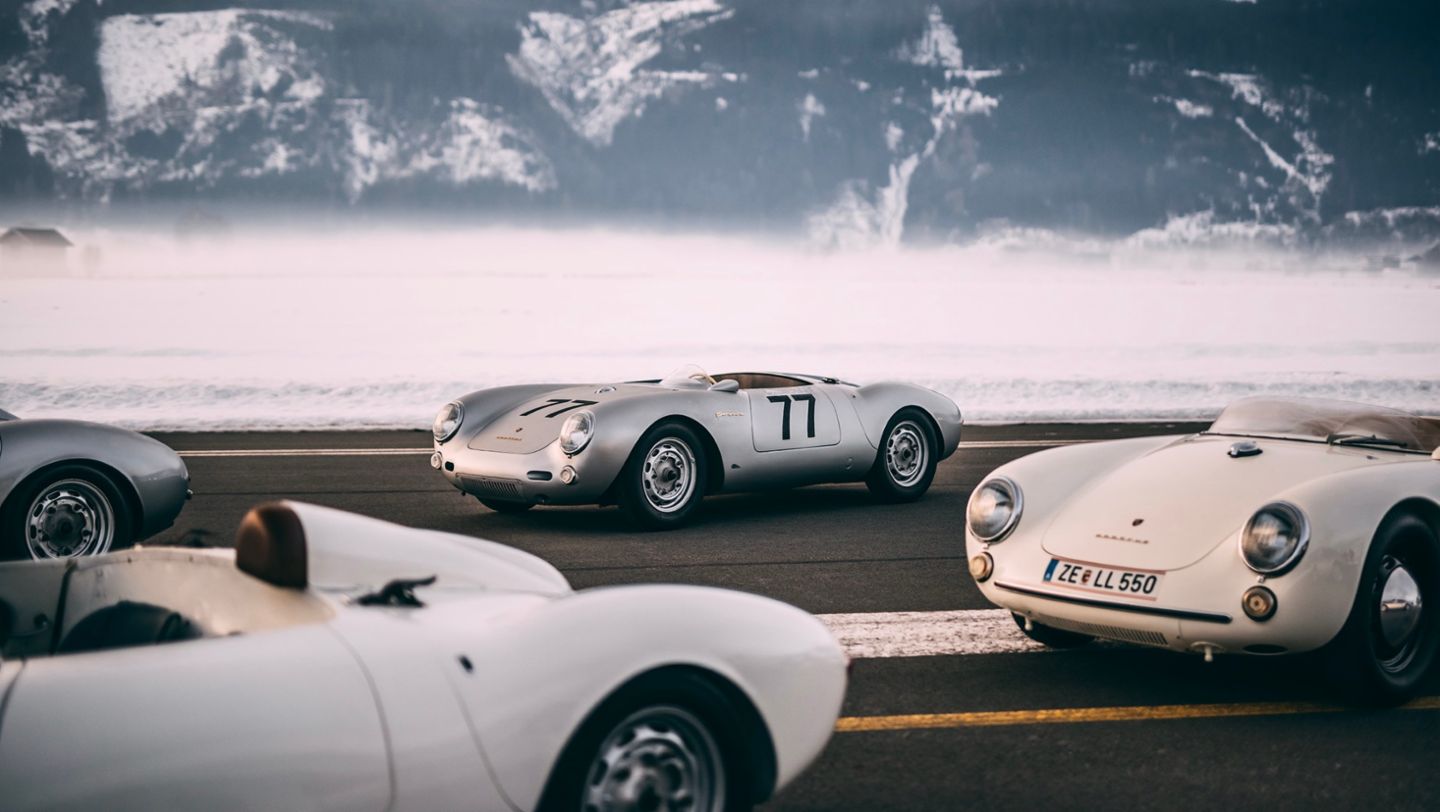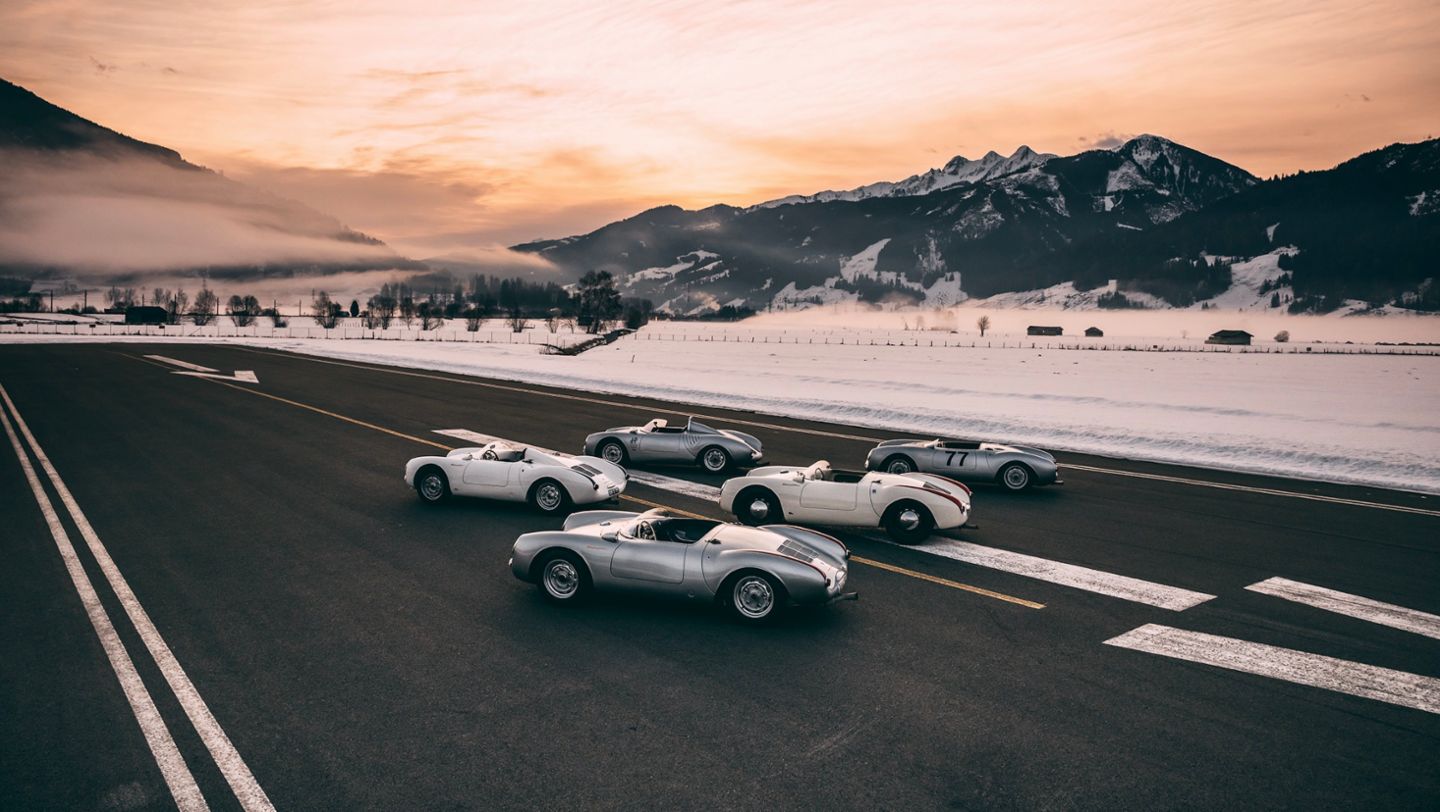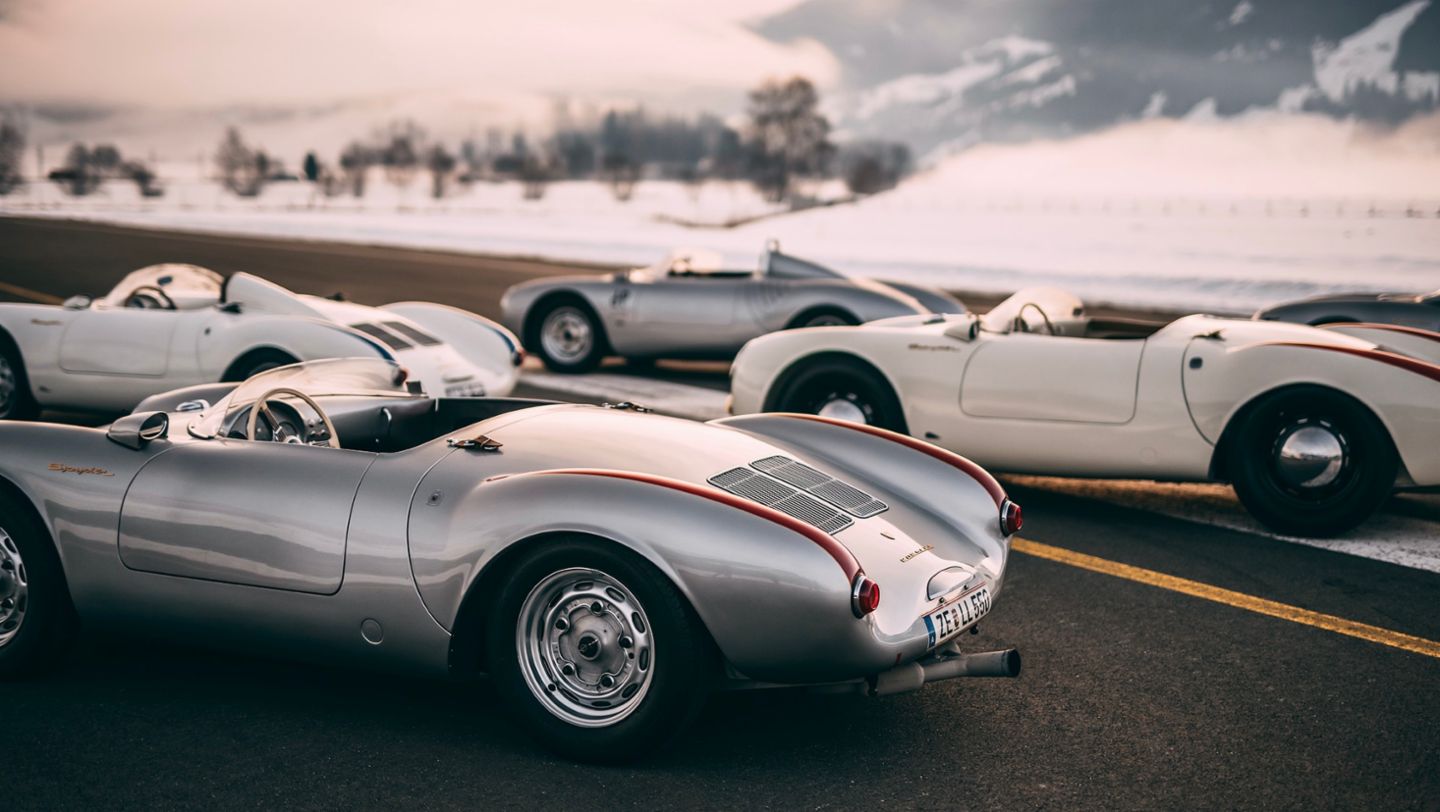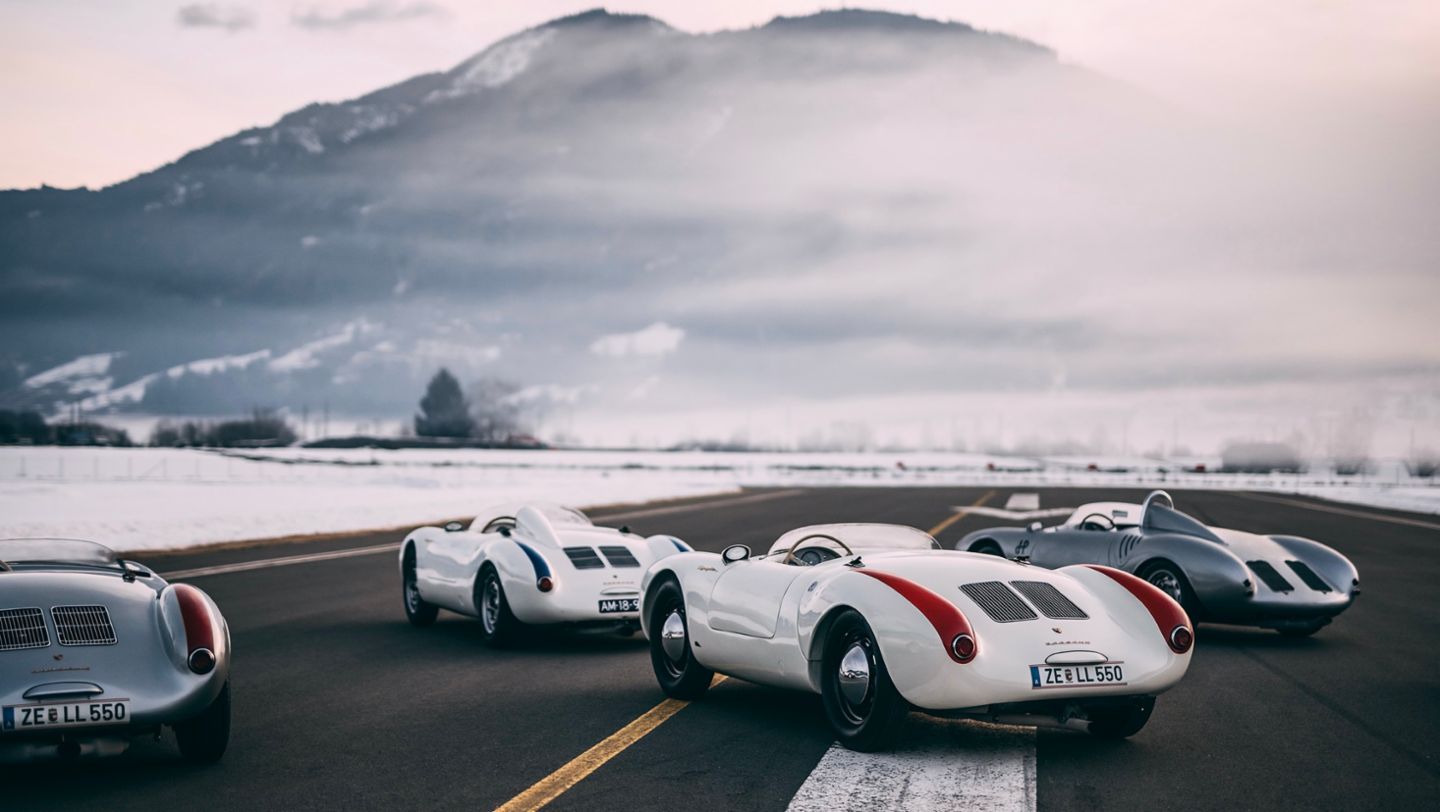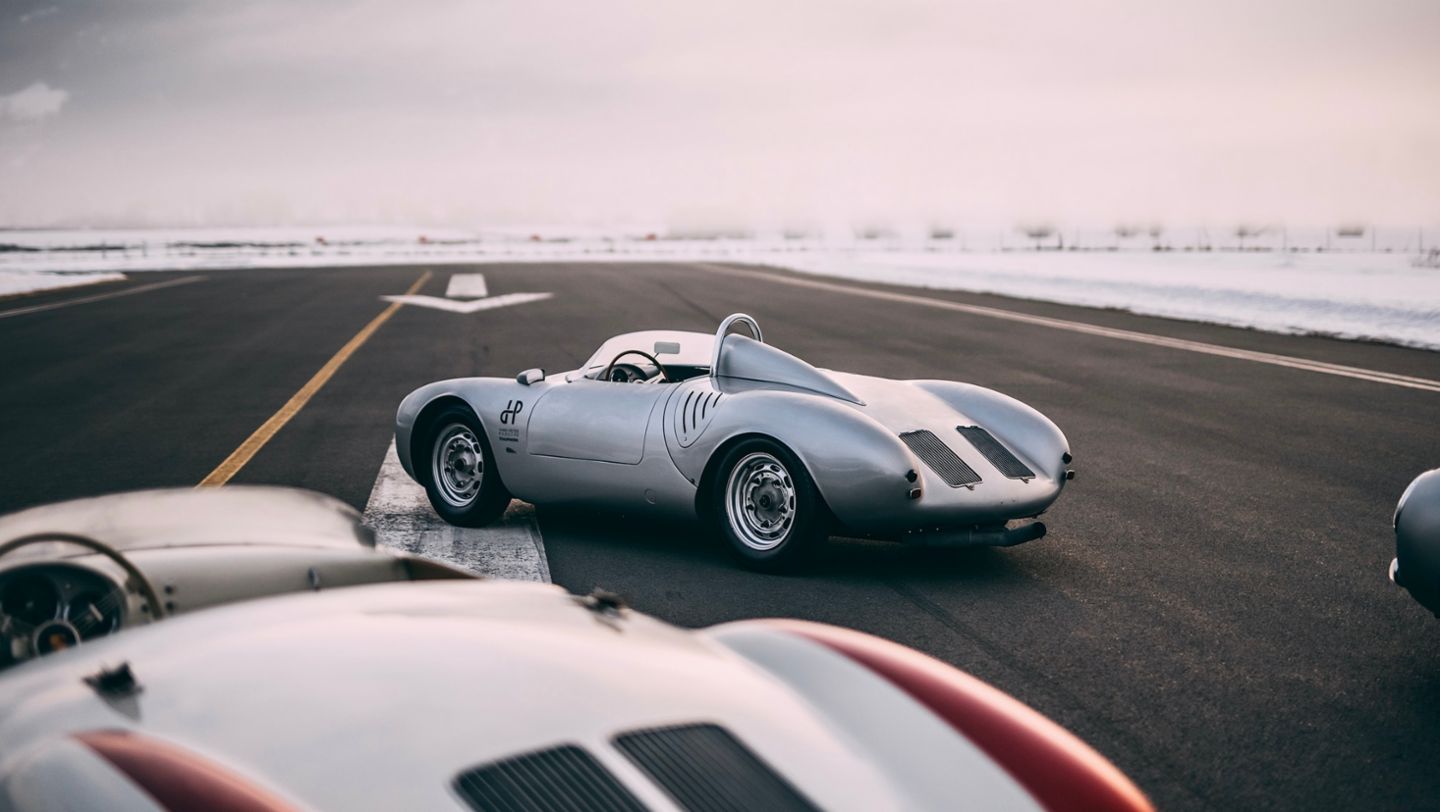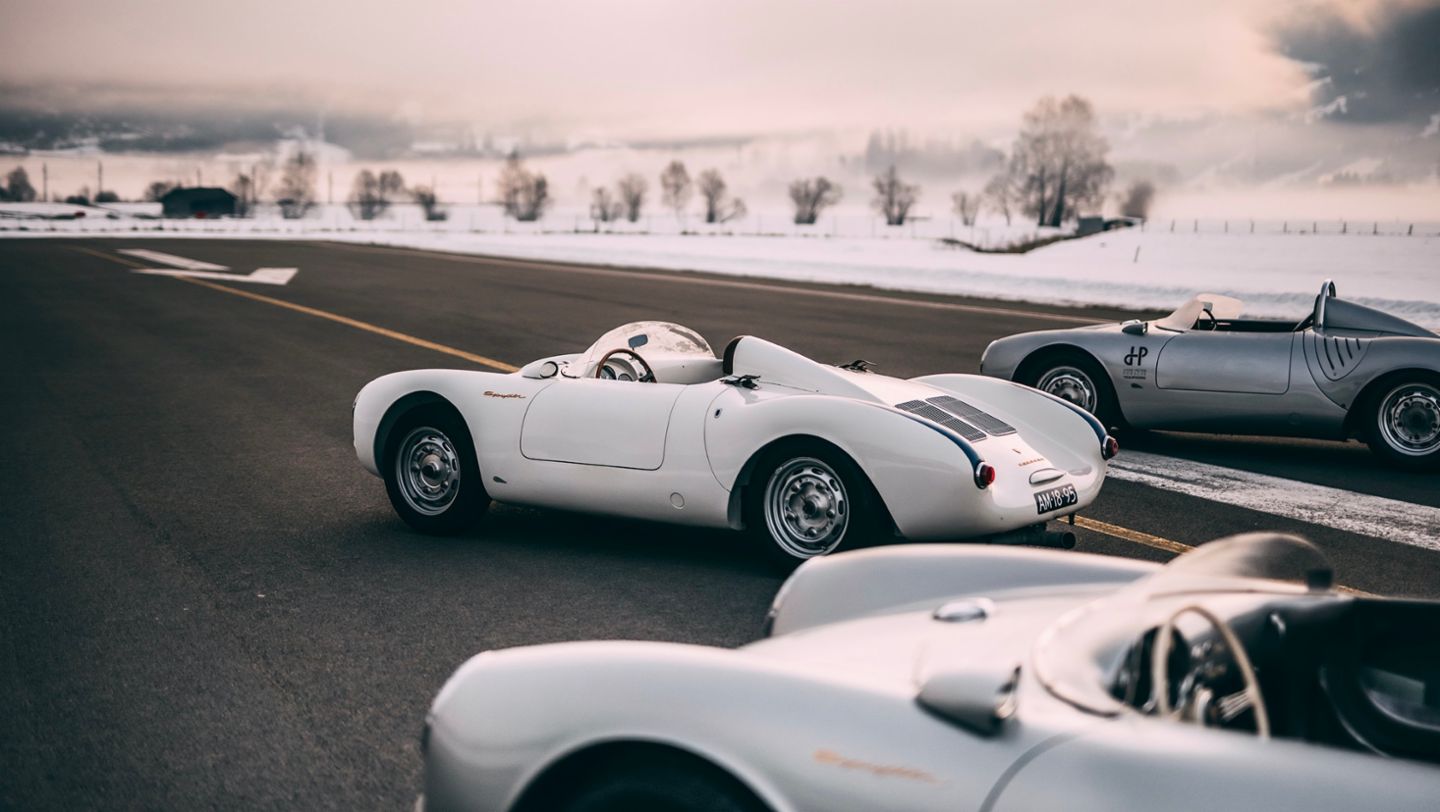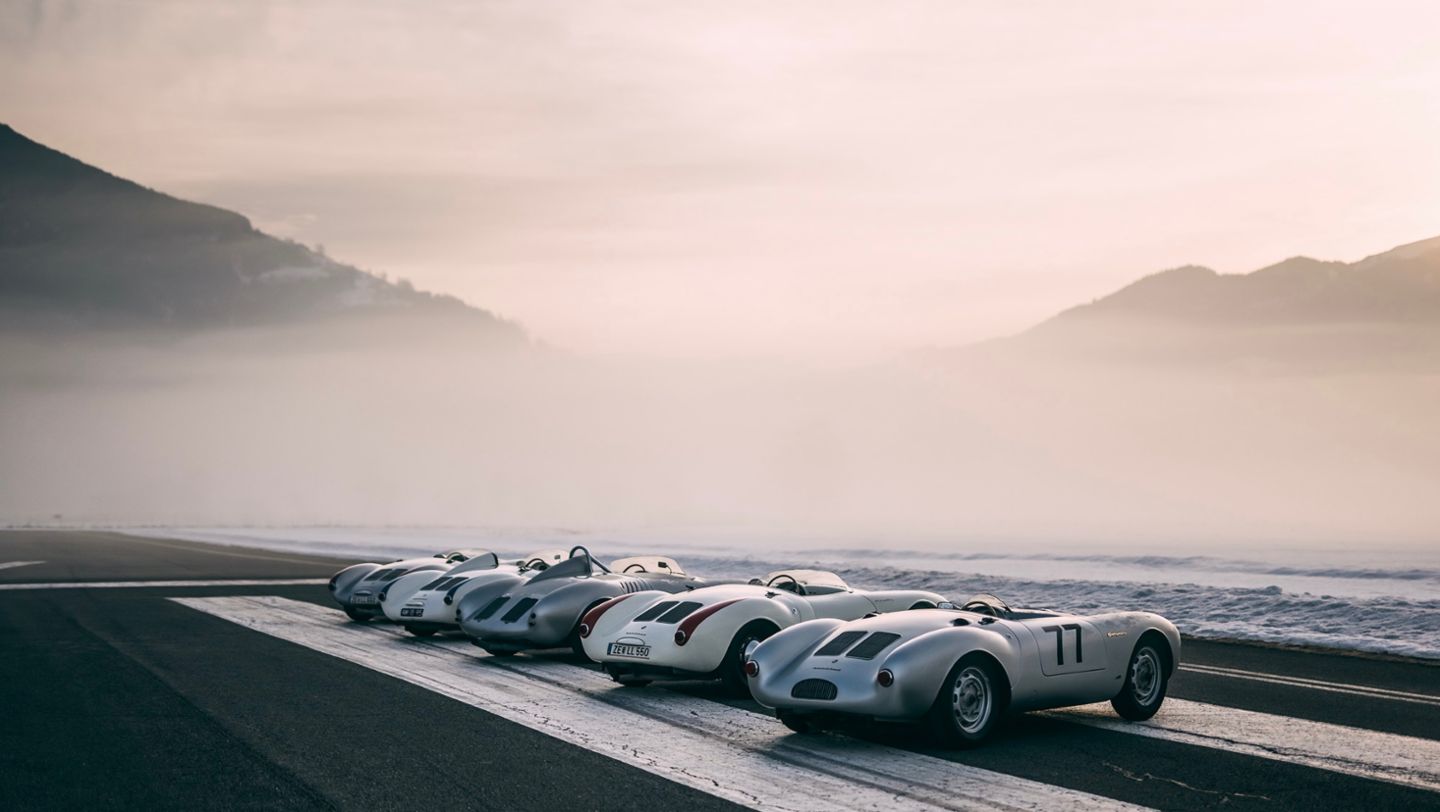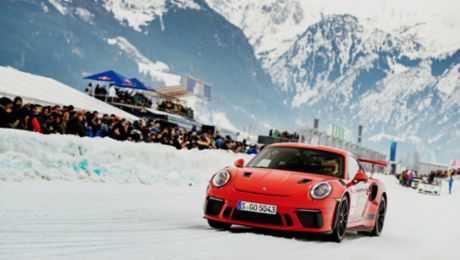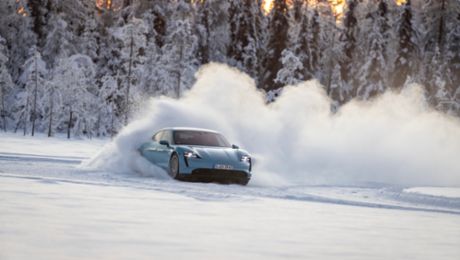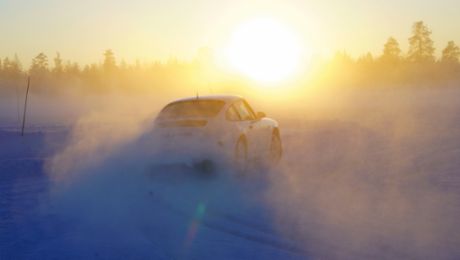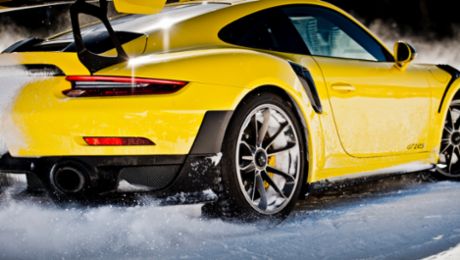Hailing from Scandinavia, skijoring – which means ‘ski driving’ – was originally used as a mode of transport, with farmers on skis using their horses or dogs to pull them from A to B. This rural practice later became a sport, with daredevils being towed by motorbikes and cars, and in the winter of 1937 it made its way on to a specially prepared circuit on a frozen lake in the Austrian Alps. From the picturesque shore of Lake Zell, spectators gathered that winter to watch with their breath held, as the ice played host to motor racing in its most nail-biting form. Fifteen years later, the sport inspired the first Professor Ferdinand Porsche Memorial Race, on February 10, 1952.
On the much anticipated day of the event’s revival, things didn’t begin as planned. Heavy snowfall just before the start of the racing forced the organisers to find a different location on solid ground, but the spectators still arrived in droves. A minute’s silence marked the one year anniversary of the death of Ferdinand Porsche who, on January 30, 1951, passed away in Stuttgart at the age of 75. He was laid to rest in Zell am See, home of the Porsche family. Once the crowds had paid their respects, the engines revved up and the spectators that had gathered eagerly turned their attention to the frenetic action in the snow.
In the early 1950s, racing was one of Austria’s most popular pastimes, attracting thousands of fans every weekend. Mass motorisation was just beginning to take off and the memorial race was proof that the fun needn’t stop when winter arrived. “There was a great yearning for motorcycles and cars,” says Austrian writer Thomas Karny, describing the period and the dream that for many “would only be fulfilled much later.”
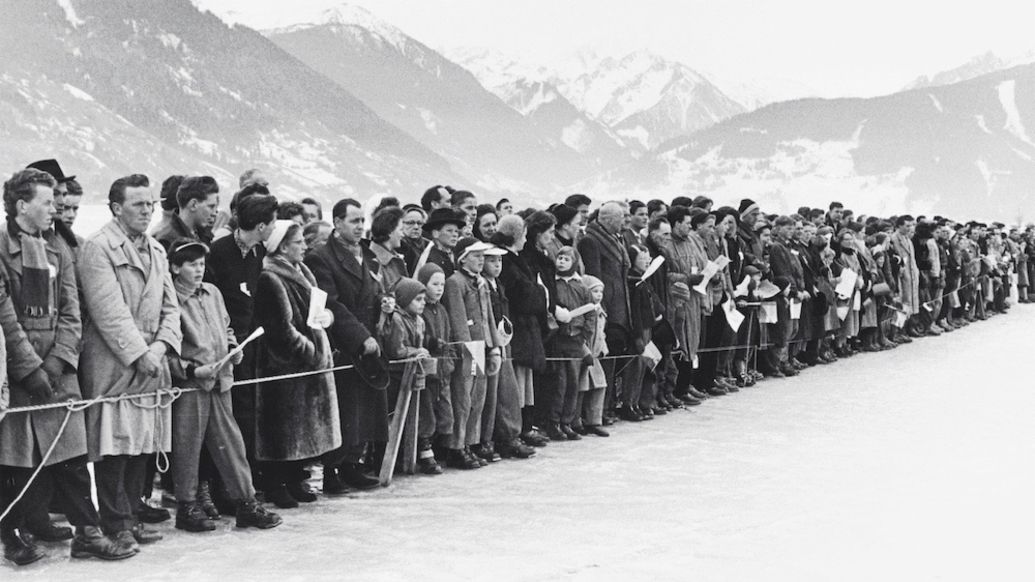
The first Professor Ferdinand Porsche Memorial Race on the improvised course of around 1,800 metres was “a flawless event without any accidents,” according to a report by the Salzburger Nachrichten. In addition to skijoring teams on two wheels and two skis, audacious car drivers also joined the fray. The fastest posted an average speed of 57 km/h.
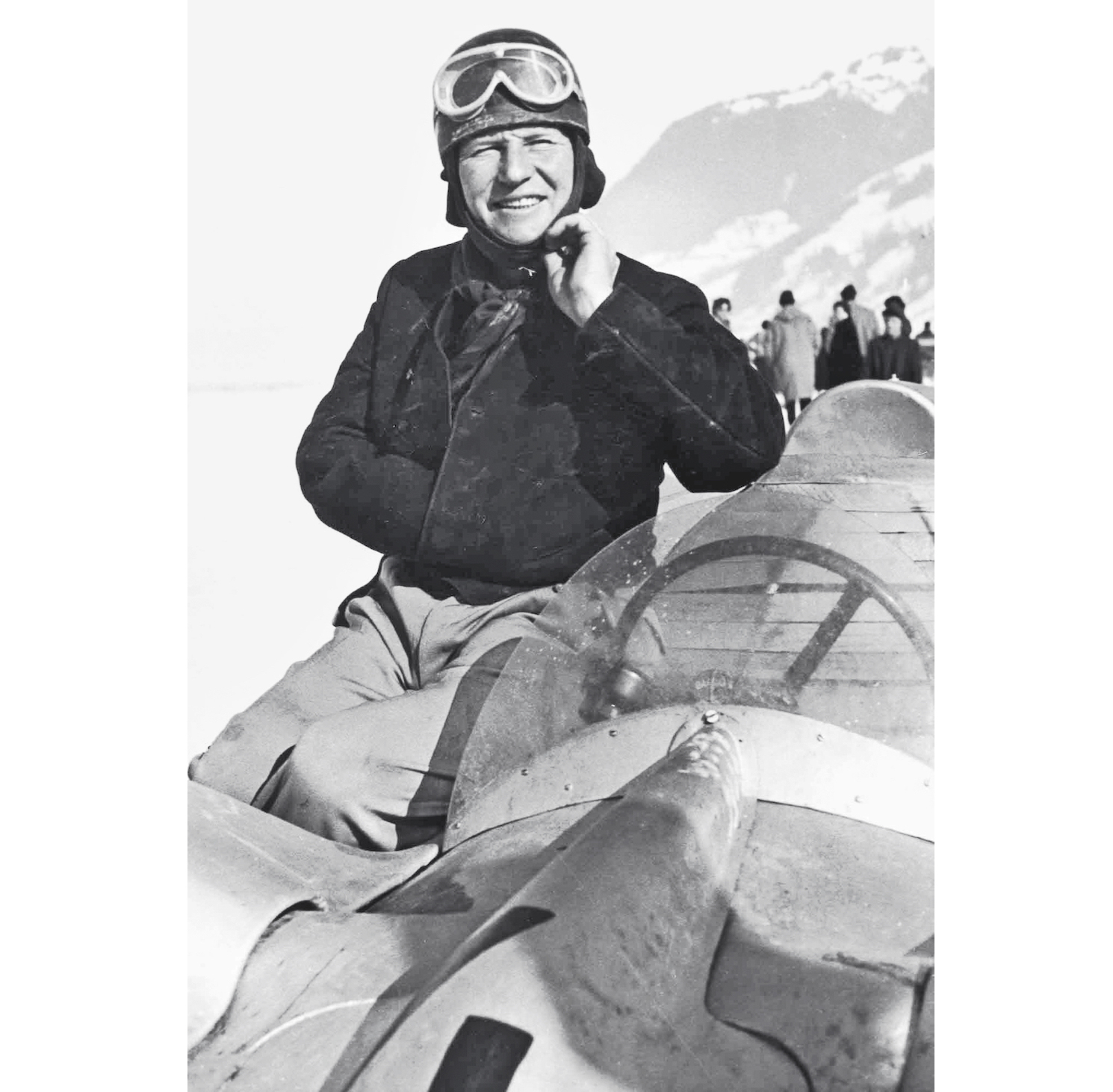
Porsche’s close connections with the region were already evident in numerous ways at the time. The Porsche family had acquired the Schüttgut estate above Lake Zell in 1941, and the company had started a new chapter in its history following the Second World War. Around 130 kilometres away, in the sheds of a former sawmill in the town of Gmünd, the first cars to bear the family name were produced.
The memorial race took place again on Lake Zell in 1953. “Forty eight participants from Austria and Germany competed in 13 exciting races,” reported the Salzburger Nachrichten this time. The Porsche 356 dominated the field in the car contests. Herbert Kaes, a nephew of Ferdinand Porsche, drove one of them to victory in the 1,500-cc sportscar class. In 1955, the class would be won by Huschke von Hanstein, Porsche’s racing director at the time. But the show was stolen by Otto Mathé, who zoomed around the course at 97 km/h, without a skier hot on his heels.
Mathé’s car was a curious Porsche-based vehicle of his own construction, nicknamed Fetzenflieger (roughly “shreds on wings”), and the 47-year-old took to the course with the use of only his left arm, after a serious motorcycle accident had left his right limb paralysed from the elbow down. “I admired the way he drove the race – with just one arm. And I thought the spikes on his famous ice car were great,” Formula One world champion Niki Lauda once remarked. In 1956, von Hanstein drove a Porsche 550 Spyder in the 1,500-cc class directly against Mathé – and lost.
The races in Zell am See continued on into the 1970s, when they had to be cancelled several times because the ice was too thin. A calamitous accident took place shortly before the event in 1974, when a snowplough broke through the ice and the driver drowned, and the races were then stopped altogether – bringing to an end a unique chapter in motorsport history. For a while, at least. The contests in honour of Ferdinand Porsche had everything that makes motorsports so appealing: exciting duels, intriguing technology, heroic winners and, of course, losers.
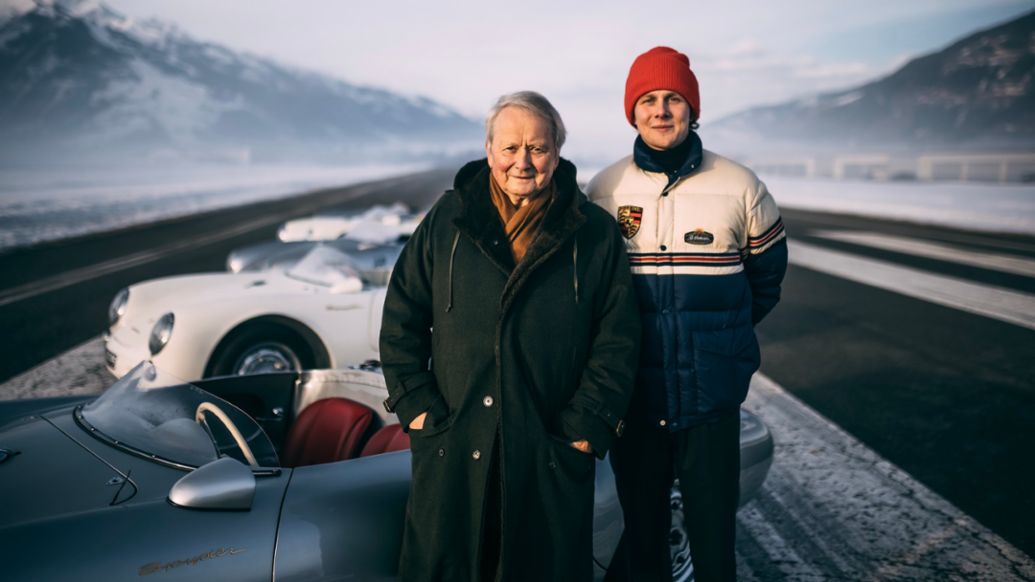
So it perhaps shouldn’t have come as a surprise that in 2019, Ferdinand Porsche Jr. and Vinzenz Greger revived the tradition and held the GP Ice Race on a track at the Zell am See airfield.
2021: Cold Start by GP
Following two successful GP Ice Race events, attended by tens of thousands of visitors, this year's spectacle in Zell am See was a little different: renamed just for 2021, Cold Start by GP took place without any public in attendance, in order to meet COVID-19 guidelines. Next year, the GP Ice Race is set to return again, bigger and better. Plans are well under way for the 2022 event, which will take place on the runway of the Zell am See airfield and will feature new elements. The GP Ice Race Team also has some surprises in store this year, for fans who can't wait that long. For further information, see gpicerace.com.
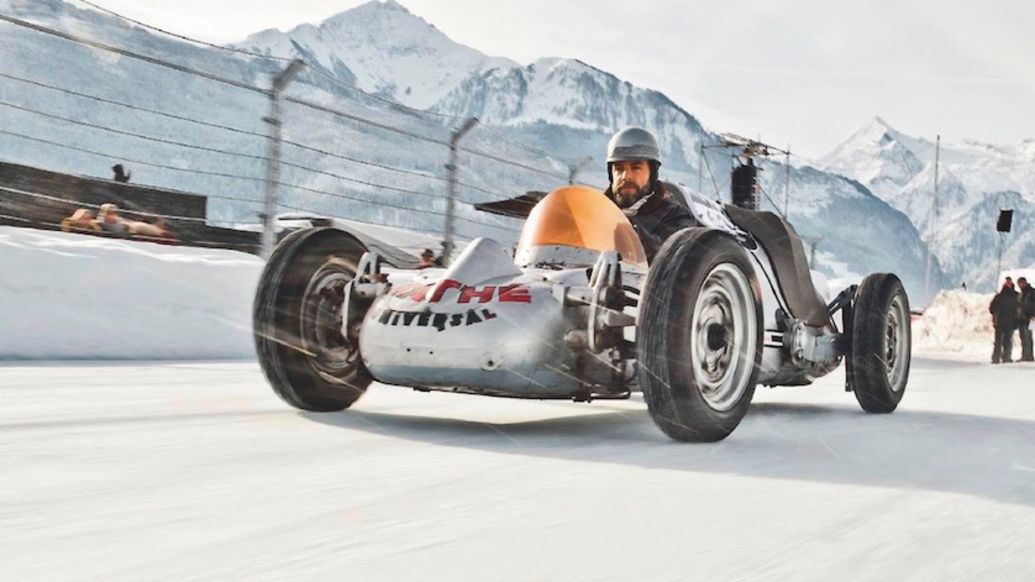
Info
Text first published in the Porsche magazine Christophorus, No. 397.
Copyright: The words, images and sounds published here are the copyright of Dr. Ing. h.c. F. Porsche AG, Germany or other individuals. They are not to be reproduced wholly or in part without prior written permission of Dr. Ing. h.c. F. Porsche AG. Please contact newsroom@porsche.com for further information.
